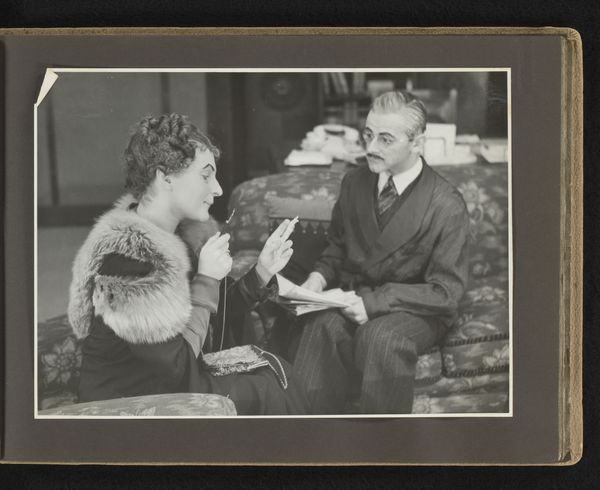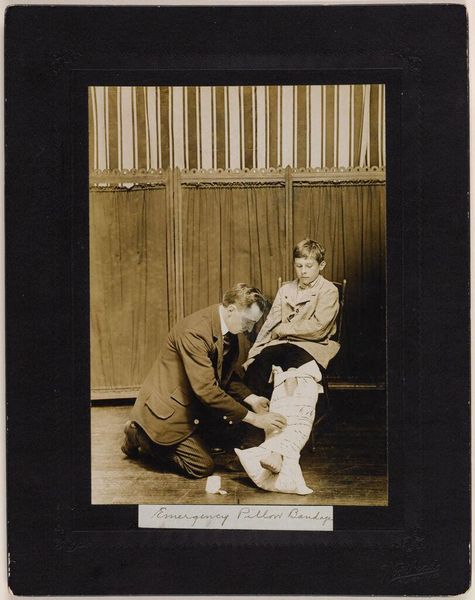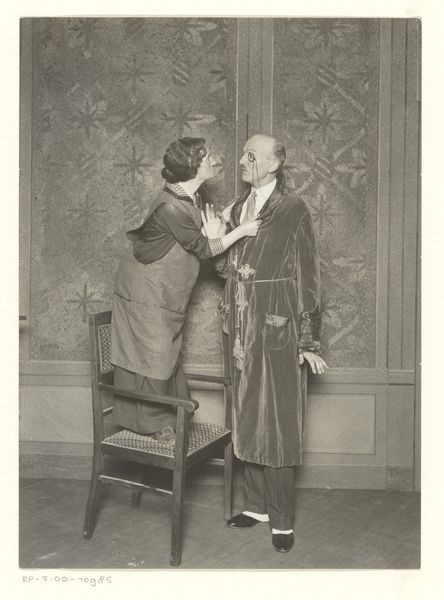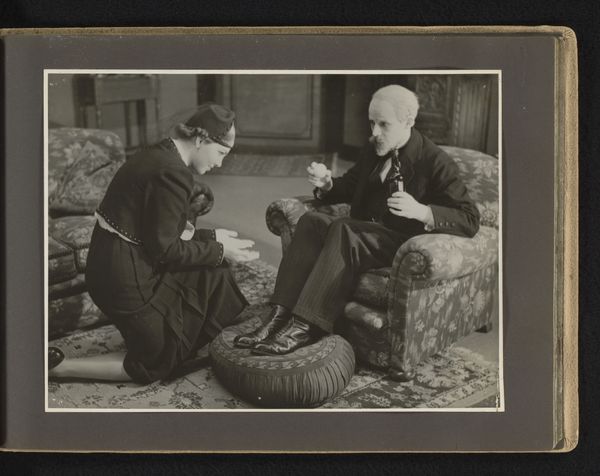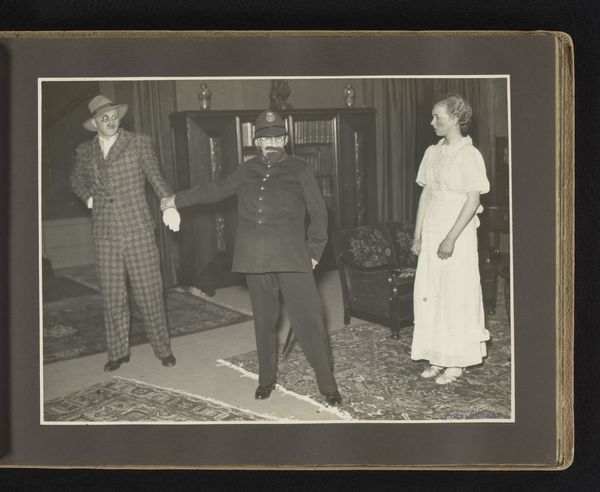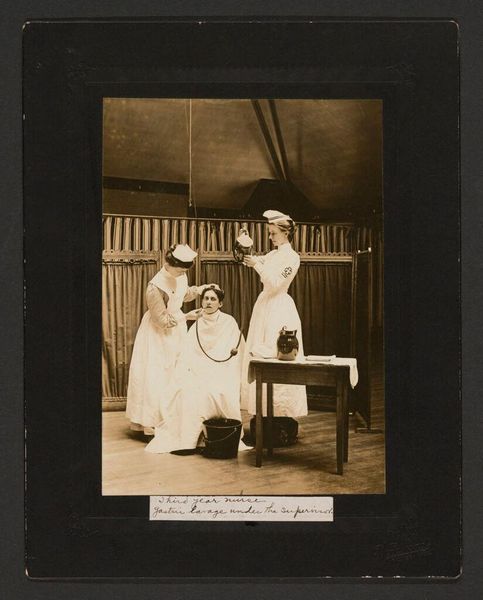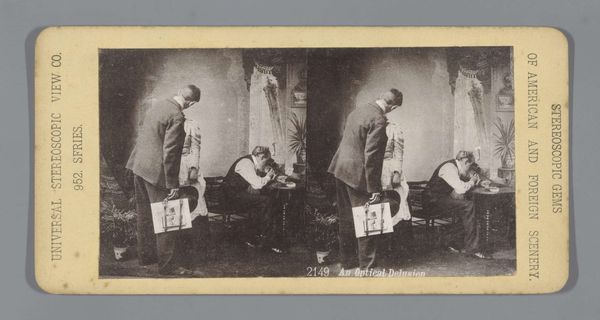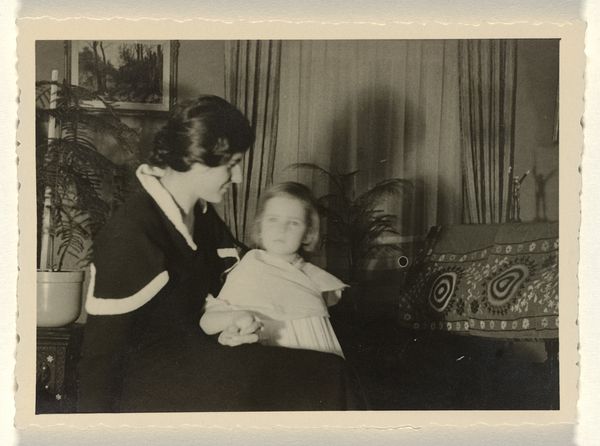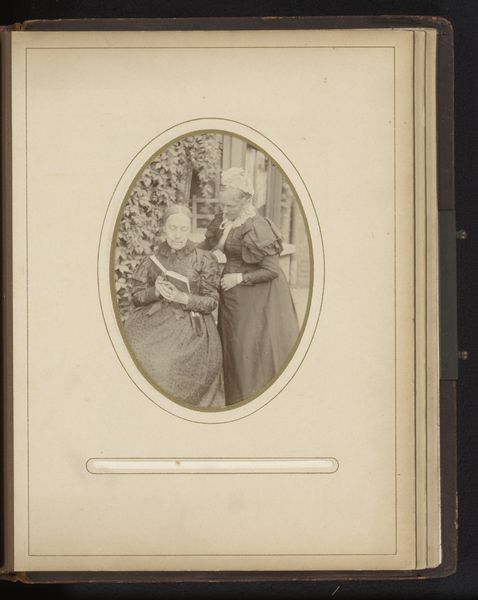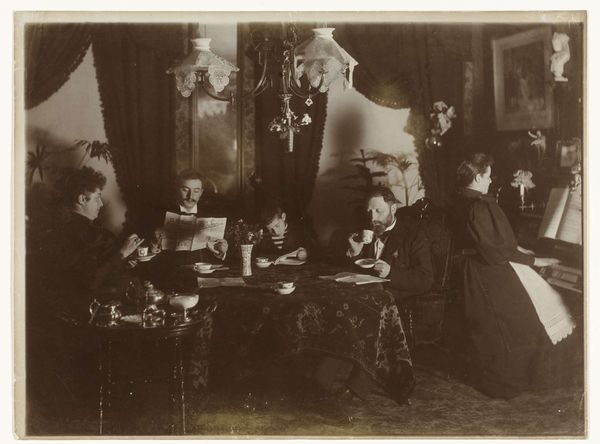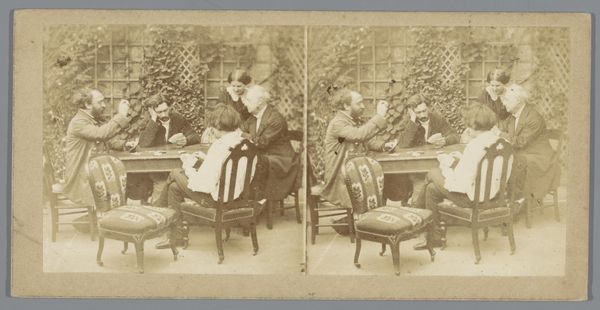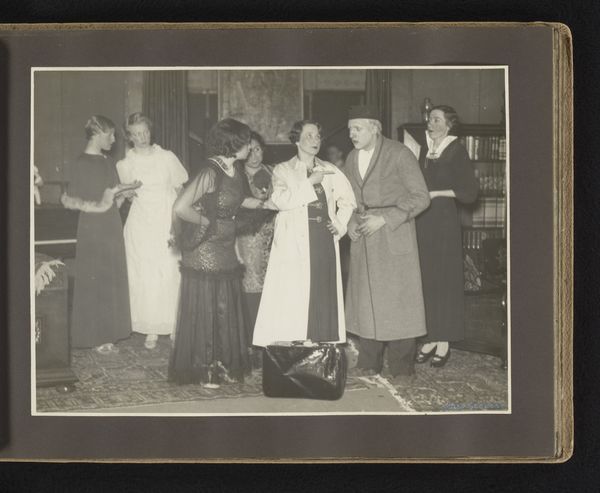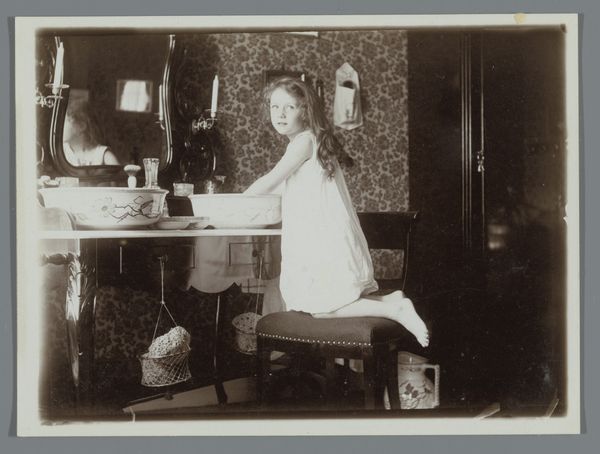
photography
#
portrait
#
photography
#
historical photography
#
historical fashion
Dimensions: height 173 mm, width 232 mm, height 211 mm, width 285 mm
Copyright: Rijks Museum: Open Domain
Curator: Here we have a photograph, likely from 1936, titled "A scene from the play 'What happened to Jonas'," attributed to Fotobureau Stevens. The composition shows three figures in what appears to be a domestic interior. My immediate impression is one of staged social dynamics—a woman in an apron offering something to a seated man, observed by another woman in a fur stole. What stands out to you? Editor: The contrast between the women really strikes me. The seated woman looks like she belongs to high society, but the woman offering an object looks like a maid or working class. How might that class divide affect how the artwork is interpreted? Curator: Precisely! Think about the period. The 1930s were marked by significant socio-economic upheaval. This photograph, likely capturing a theatrical performance, offers a snapshot of those tensions. Consider the gaze: the seated woman seems to scrutinize, the man appears expectant, while the serving woman's posture could be read as subservient, yet subtly powerful. It highlights the inherent power dynamics within those social strata, wouldn’t you agree? Editor: Yes, definitely. Is that object being exchanged symbolically important in representing that power struggle? Curator: Absolutely. It acts as a crucial signifier of the relationship and underlines who is in control and what kind of 'transaction' this is about. If this still is pulled from a play, what does this tell us about period dramas and their audiences? How did they relate to class, labor, or gender? Also, isn't it interesting that Stevens is a "photo bureau?" How would they influence meaning-making in the period this photo was taken? Editor: That definitely sheds light on it! I initially saw it just as a period photograph, but framing it within the social context and the idea of labor relations of the time really makes you think about who holds the power. Curator: Exactly! It pushes us to consider photography, performance and class tensions, questioning what these staged interactions reflect about society at large, don’t you think? Editor: I do, and that deeper understanding definitely changes how I appreciate the work now! Thank you.
Comments
No comments
Be the first to comment and join the conversation on the ultimate creative platform.
